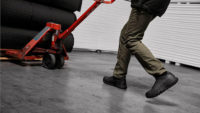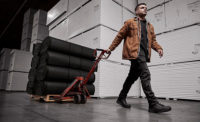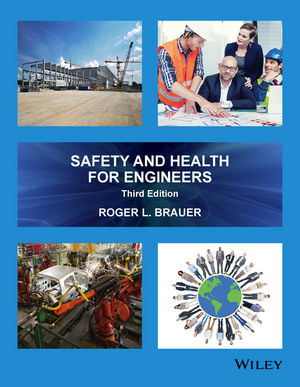Industry innovations drive trends and create more versatile footwear
Significant strides

Safety is the most important issue in any workplace, and safety footwear has seen significant advances over the years. On a construction site, a modern work boot might still look a lot like a work boot, but not every job looks the same as it once did. In a manufacturing environment, the footwear needs have also changed.
The market for safety footwear has expanded over time as more workplaces have required foot protection from impact, electric shock and chemical hazards as well as enhanced slip resistance in both indoor and outdoor work environments.
With every new product introduction, safety footwear manufacturers work not only to keep up with changing needs, but also to identify new ways to make work boots and shoes lighter and more comfortable, but ultimately more safe. As PPE footwear brands strive to combat foot fatigue and improve worker health and performance, we’re also constantly seeking feedback, reviewing a myriad of data points that range from fit and function to wear and durability. From the way safety footwear is being designed to the materials used in its construction to deeper knowledge about the end user, manufacturers simply have more to work with across the new product development cycle.
Modern safety footwear has made impressive advancements in the way of safety, material and comfort innovations. These important developments in footwear as PPE have made the selection at shoe stores abundant and diverse. This has also made choosing the right shoe for the job more important than ever.
Athletics for indoor work
Now, with a relatively wide selection of new boot silhouettes and shoe styles made for the working world, not all footwear is created equal. The PPE industry has also evolved to include a wide variety of versatile safety footwear. Low-cut, sneaker style work shoes make a lot of sense when the job requires the kind of movement similar to a sneaker’s athletic origins.
In environments where sure footing is essential, today’s outsoles can feature tread designs similar to car or bike tires and siping to divert liquids quickly, new materials offering enhanced grip and traction as well as an overall design that maximizes surface area and tests better with Mark II and Satra anti-slip standards, all the while helping to deliver more sure-footedness on the job. Sporty nylon and synthetic mesh uppers that are non-marring allow for greater motion and breathability, while still providing support and structure. These textiles also allow for color variations and patterns that help continue the athletic feel of the safety shoe. It’s easy to see how fast-paced, indoor work environments like assembly, warehousing, distribution and some manufacturing are well-suited for a safety shoe that resembles and performs like an athletic sneaker.
Today, there are many PPE shoe brands that feature footwear options that can easily be mistaken for your favorite street shoe. The sneaker style with a safety toe, and other safety features, have also become popular amongst the younger generation of tradesmen and women where versatility and design are impacting their buying habits.
If sneakers aren’t your style, the market is rich with wedge and hiking-inspired silhouettes. These boots may more closely resemble the traditional “work boot” feel but are definitely in a new category of safety and performance thanks to modern materials and innovations. The updated version of your favorite work boots include a variety of new safety and comfort features, making for a sleeker, modern, more comfortable shoe.
Work built for her
With more women entering the trades, innovations in women’s workwear has become an essential priority. Previously, much of the PPE available on the market was designed for men, but simply shrunk down for women. This forced tradeswomen to become accustomed to needing to know their size across all men’s safety gear, and that also included work footwear. This meant women were sacrificing comfort, fit, and most importantly, safety every day on the job.
Today, more women’s PPE footwear options are made on a woman’s specific last, and built to fit a female worker with the same durability, comfort, performance and safety-innovations found in the men’s styles. With an array of styles and silhouettes, women have a much more versatile selection of safety footwear, making it easier to choose the best boot or shoe for their occupation and keep them safer on the job.
Keeping toes safe
For workers who require a safety toe, today’s work boots and shoes feature more than steel safety toe options. New materials, such as carbon-fiber, are 15 percent lighter than steel toes, without sacrificing safety. A carbon-fiber or composite toe cap may be essential for occupations where workers must pass through metal detection, allowing the boot to be designed to be completely non-metallic. Additionally, manufacturers are seeking out better practices for designing and integrating safety toe caps into footwear.
Modernizing materials
In recent years, material innovations for workwear have made significant strides. The materials used in safety shoes each serve a unique purpose for the worker and to best protect feet on the jobsite. Most waterproof linings are breathable and are used to help keep feet cool and dry in both hot and cold climates. Reflective webbing and accents that illuminate when shown with an active light source, like a vehicle headlight, make sure workers can be seen at night or in dimly lit environments. Siped and slip-resistant outsoles disperse liquid quickly to protect workers from slips and falls. Natural odor preventing lining can also be used to increase the longevity of work boots and keep wearers feet fresh.
Additionally, there are several different types of leathers, polyesters, and synthetics now used in workwear uppers that can be treated to protect against relatively harsh chemicals. Barnyard-resistant leathers are also chosen as part of the heavy-duty work boot construction to withstand the damaging effects of caustic chemicals including oleic acid and ammonium hydroxide and help to extend the life of a boot.
Designing for comfort
Keeping workers feet safe on the job is the most important aspect of any PPE footwear, but the advancements in comfort technology have made it possible to have safe, and comfortable feet, even on the longest days. Many work boots and shoes of today utilize innovative cushioning technologies that answer the long-standing demand from customers seeking lighter weight boots with more cushioning. For many brands, cushioning innovations help make work boots feel more like street shoes, adding extra comfort and support with each step.
Innovations in PPE footwear are constantly evolving and changing to fit the needs of tradesmen and women. With the numerous material technology and safety advancements being made in workwear it is becoming easier for tradesmen and women to find the best safety shoe to fit the job, their individual style, and their foot. Safety managers play an important role in helping communicate specific job site safety requirements. From there, customers should absolutely take some time to consult with a retail specialist or visit a manufacturer’s website to learn how modern safety footwear can help keep them more comfortable and safe throughout their work day.
Looking for a reprint of this article?
From high-res PDFs to custom plaques, order your copy today!








